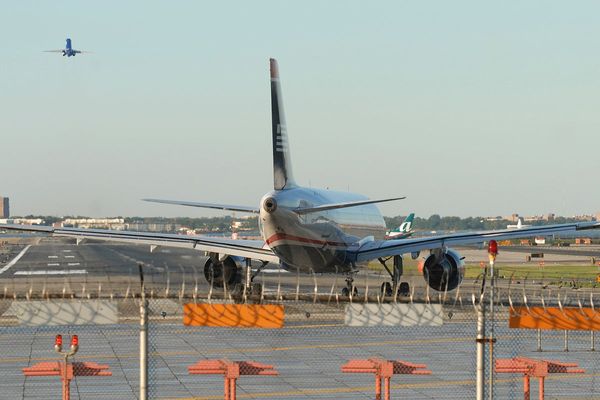
It was 2010 and we were more than a little apprehensive walking into the vineyard restaurant located on the outskirts of Cape Town. All we knew about it we had learnt from intensive web searches conducted ahead of our visit but we did know it was highly rated for its food. The flip side: Would it be a starchy kind of place? What if you needed to know every fork and knife and spoon and saucer? What if there was an unspoken dress code?
As it turned out, we couldn’t have been more wrong. It was evening and so we couldn’t make out much of the surroundings—all I remember is that the restaurant was located far down a shadowy driveway—but from the moment we mentioned our reservation at the desk, our assumptions melted away. Turning a graceful blind eye to our dishevelled appearances—we’d spent the day travelling to and back from the Cape of Good Hope, 71km away—the maître d’ ushered us to our table and handed us over to our server. She talked us through the tasting and a la carte menus, smilingly explained unfamiliar terms and ingredients, recommended the wines and took it on the chin when one of us insisted on drinking only water.
Six years down the line, I remember a few of the dishes—especially our first tasting of sorrel, a tangy microgreen that’s somewhere between a herb and a leaf—but I do remember how we felt: at ease, well-looked after and well-fed. There were tables where couples had obviously made the effort to dress up; there were tables with solo diners, still in their business suits but I remember thinking how comfortable each of them appeared.
It was only later that we discovered that La Colombe was rated #12 in San Pellegrino and Restaurant magazine’s list of the world’s best restaurants for 2010. Till then, the list had been something of a construct in our sceptical minds, one of those industry-driven things that serves internal interests and open to influences and interpretations. That single evening, though, gave that list the one element that no awards evenings or media splashes can match: credibility.
In the six years since then, we’ve had the good fortune to dine at six or seven more of the restaurants that made the world’s top 100 in 2016. Besides La Colombe (now at #76), there’s the anything-but-dal-barabar ghar-ka-murgi Indian Accent, of course (at #87 this year, down 10 places from 2015), in Delhi—the only restaurant in the Indian subcontinent to make the list two years in a row—Dinner by Heston Blumenthal in London, Nahm and Gaggan (both in Bangkok), D.O.M. in Sao Paulo and Central in Lima. (The seventh iffy shot is St John’s, also in London; we ate at the Spitalfields branch that is currently closed.) Apologies if that sounds terribly show-offish but here’s the thing: Travelling on limited budgets (unlike the list’s target audience, admittedly, senior business travellers with generous allowances), with a limited number of meals available and with only limited time available for pre-departure research, we’ve found that the list works—for a certain kind of dining experience.
It’s clear, for instance, that the list likes new-age, modernist cuisine. It loves food that plays with the mind, that makes use of technology to push boundaries, that believes in a certain amount of shock and awe—crunchy Amazonian ants on pineapple at D.O.M, charcoal at Gaggan—but, above all, ticks all the hipster boxes about local sourcing, celebrating indigenous produce, reinterpreting classics (Blumenthal’s meatfruit, anyone?). Without ever having visited Osteria Francescana, this year’s top-ranking restaurant (which The Eater calls “one of Italy’s toughest tables”), I bet you’ll never mind a spaghetti puttanesca on the menu—but, chances are, you’ve already had your fill of that at the trattoria down the road from your hotel.
While the actual food we’ve eaten at these places varies on a scale of blew-my-mind to could’ve-been-better (Nahm, particularly), the one commonality these restaurants share across cuisines and regions—besides superlative service—is menu coherence: No matter where you go, the least you can be assured of is a well-researched, storied, passionate meal. Be it the Bihar-inspired makhana at Manish Malhotra’s Indian Accent or the Central dessert that riffs off coca leaf—a mainstay for trekkers to Machu Picchu—the food, simply, makes sense.
That is not to mean, of course, that the San Pellegrino compilation is the list of the best 100 restaurants in the world. There’s no dismissing its bias towards Europe and the Americas or explaining the exclusion of non-touristy destinations or the cursory inclusion of fabulous food cities like Istanbul and Singapore. We—and I’m sure everyone else—have had amazing food in places that no Best 100 judge will ever step into. A day after being somewhat disappointed at not being blown away at D.O.M., we travelled across Sao Paulo to eat at Mocoto. The ambience was strictly functional, English (and, therefore, communication) was scarce, service was perfunctory. But two years later, we still think of going back, just for the pork crackling.











